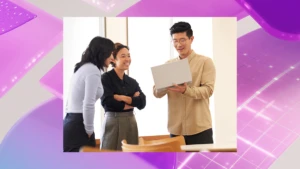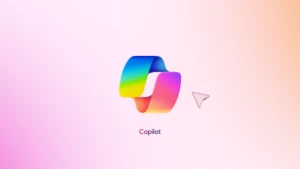
Three new voice features for Outlook mobile—now on iOS, and coming soon to Android
If you feel like you are juggling more meetings, emails, and chats than ever, you’re probably right—and you’re certainly not alone. In our recent Work Trend Index annual report, Microsoft shared data that clearly illustrated how the digital intensity of workers’ days has increased substantially. Email is no exception—the number of emails delivered to commercial and education customers in February 2021, when compared to the same month the year before, was up by 40.6 billion.
This digital intensity shows no signs of slowing. And as regions around the world open up and move from a remote model to a hybrid with people working together across a wide range of scenarios—remote, onsite, and on the go—it’s critical that we find new ways to help people connect and get tasks done on mobile devices with experiences that help you be as productive as you are on your PC, but are designed for the unique capabilities and limitations of a mobile device.
At Microsoft, we’re investing in voice capabilities that transcend the challenges of small screens and tiny keyboards to help people communicate and manage tasks when they’re working on the go. We’re powering these capabilities with Microsoft Graph, which aggregates and organizes billions of signals across your organization as people work in Microsoft 365 all day. And the true magic happens when we layer AI on top of the Graph to get really valuable insights, so that when you use your voice to do things like request “the 2022 budget report” or “email Kim’s boss” the correct document or name appears in a snap.
Today we are announcing new enhanced voice capabilities in Outlook mobile for iOS (and coming soon to Android) that make using voice to schedule meetings and compose emails simpler for everyone. These new AI-enhanced voice capabilities quickly contextualize your voice requests and provide a rapid response, making it more easy and natural to work on the go.
Let’s take a look.
1. Use your voice to schedule meetings in Outlook mobile
Let’s say you’re preparing dinner with your family after work when you realize you forgot to schedule an important meeting for the next day.
To ask for help or take an action, simply hold down the plus sign icon in Outlook mobile, and the microphone icon to “Use Voice” and tell Cortana what you want to do. Cortana uses AI to help you find the right file, connect with a particular co-worker, or manage your calendar. For example, let’s say you want to quickly know what’s coming up next on your schedule. Just tap the microphone icon and ask something like, “When’s my next team meeting?” Cortana will instantly contextualize your answer and get you up to speed.
The speed and ease of using your voice can also extend to more complex projects, even with people outside your organization. Cortana leverages insights from Microsoft Graph to recognize how you work and who you work with. This provides a more personalized experience driven by your own, natural voice. You can say, “Set up a meeting with Jill and her team for next Monday about the Q1 budget.” And then, “Add Jacob,” and Cortana will recognize the correct coworkers and compose the invite. Finish up with a quick, “Send it,” and your task is complete.
2. Use your voice to do natural language search in Outlook mobile
It’s also easier and more natural to search with voice and to surface content in Outlook mobile. For instance, you can say “Find emails sent to John with attachments about the Q1 project budget”, without needing to rely on key search terms.
3. Use Dictation in Outlook mobile
Microsoft 365 users can also take advantage of Dictation in Outlook mobile. This functionality is something you may be familiar with on desktop for Word and Outlook, now available for iOS, with Android coming soon. With the power of Dictation in Outlook mobile, you can now use your voice to respond or write new email messages, delivering advanced speech-to-text while on the go. It is less likely you will spell a name wrong when dictating emails, as Dictation in Outlook now recognizes the names of people you work with, through the power of the Microsoft Graph. By simply speaking naturally, you have the potential to get more work done in shorter amounts of time—and with a greater sense of ease and control.
The future of work with Microsoft 365
I say this often, but it bears repeating: This is just the beginning. Leveraging research across Microsoft and with third-party partners; looking to usage across the Microsoft 365 cloud; and talking every day with our customers around the globe, we are committed to understanding how work is changing. And we’re using what we learn to invest in technologies that empower your people for the flexible work of the future. We imagine a future where people can bring their best selves to every task and interaction—working across locations and time zones—while also balancing the intersecting demands of work and life. And we will continue to bring you new experiences to help build that future in the weeks and months to come.
As always, Microsoft 365 data is in your control, and we handle it–and your privacy–responsibly, securely, and in compliance with relevant regulations as laid out in the Microsoft Trust Center and Online Services Terms.




